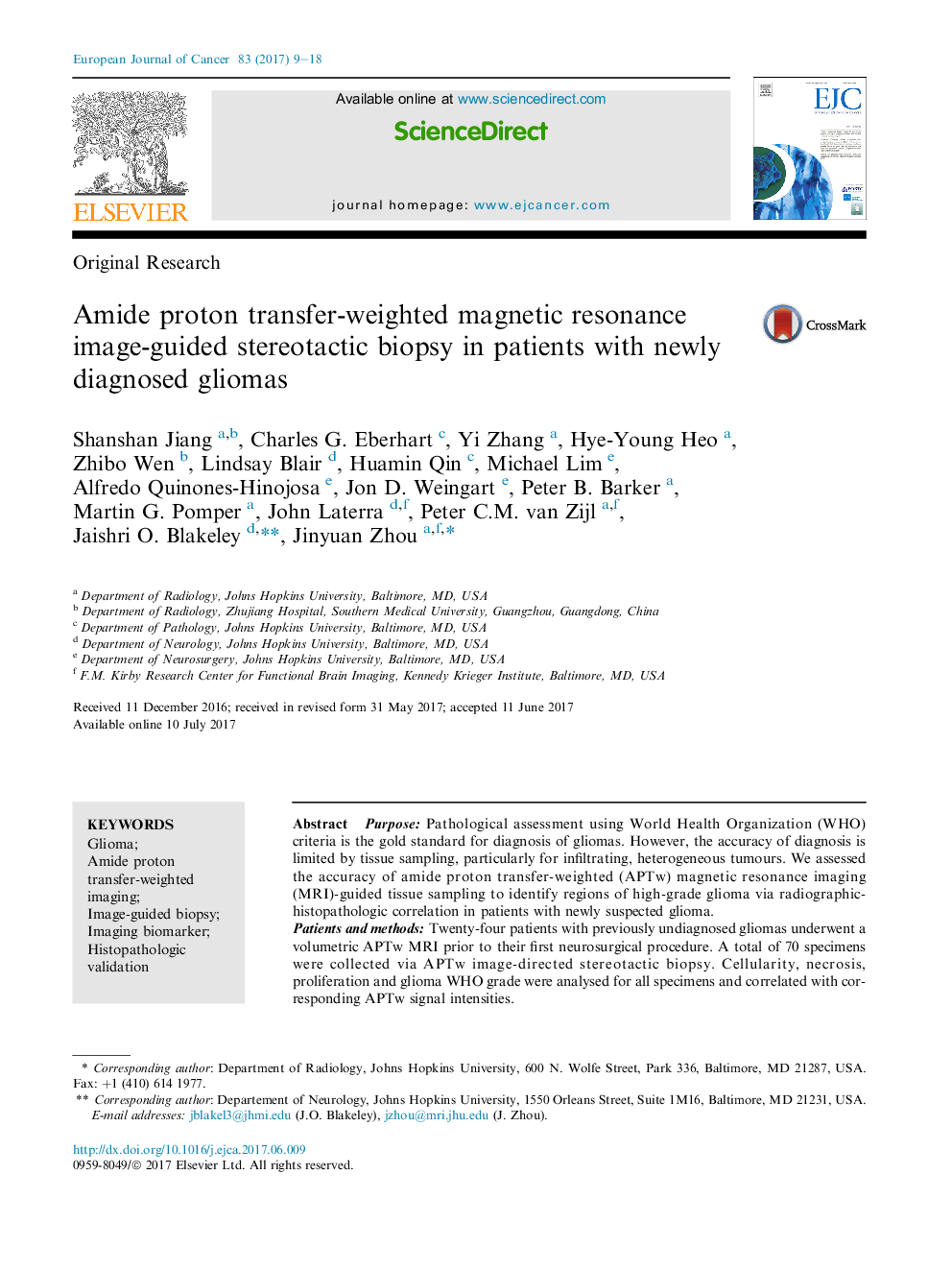| Article ID | Journal | Published Year | Pages | File Type |
|---|---|---|---|---|
| 5526396 | European Journal of Cancer | 2017 | 10 Pages |
â¢APTw images were used to guide diagnostic neurosurgical procedures.â¢APTw MRI guidance found multiple WHO grades within the same lesion in 25% patients.â¢APTw hyperintensity identified tumour areas of higher cellularity and proliferation.â¢Maximum APTw intensity correlated with the histological grade of the tumour.
PurposePathological assessment using World Health Organization (WHO) criteria is the gold standard for diagnosis of gliomas. However, the accuracy of diagnosis is limited by tissue sampling, particularly for infiltrating, heterogeneous tumours. We assessed the accuracy of amide proton transfer-weighted (APTw) magnetic resonance imaging (MRI)-guided tissue sampling to identify regions of high-grade glioma via radiographic-histopathologic correlation in patients with newly suspected glioma.Patients and methodsTwenty-four patients with previously undiagnosed gliomas underwent a volumetric APTw MRI prior to their first neurosurgical procedure. A total of 70 specimens were collected via APTw image-directed stereotactic biopsy. Cellularity, necrosis, proliferation and glioma WHO grade were analysed for all specimens and correlated with corresponding APTw signal intensities.ResultsThirty-three specimens displayed grade-II pathology, 14 grade-III, 15 grade-IV, and eight specimens revealed only peritumoural oedema. Multiple glioma grades were found within a single lesion in six patients. APTw signal intensities of the biopsied sites and the maximum APTw values across all biopsied sites in each patient were significantly higher for high-grade versus low-grade specimens. APTw signal intensities were significantly positively correlated with cellularity (R = 0.757) and proliferation (R = 0.538). Multiple linear regression analysis showed that tumour cellularity and proliferation index were the best predictors of APTw signal intensities.ConclusionAPTw imaging identified tumour areas of higher cellularity and proliferation, allowing identification of high-grade regions within heterogeneous gliomas. APTw imaging can be readily translated for more widespread use and can assist diagnostic neurosurgical procedures by increasing the accuracy of tumour sampling in patients with infiltrating gliomas.
